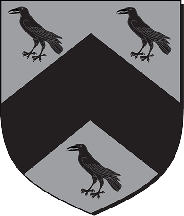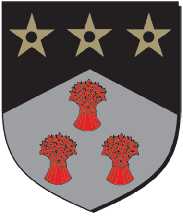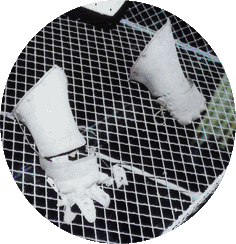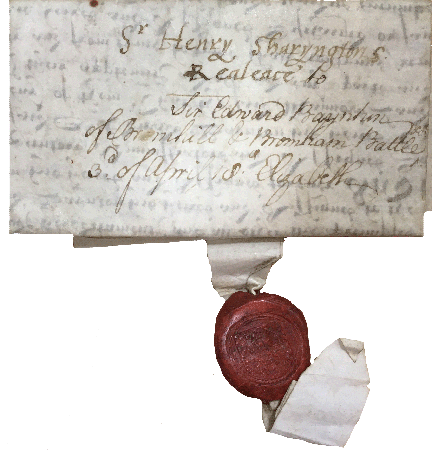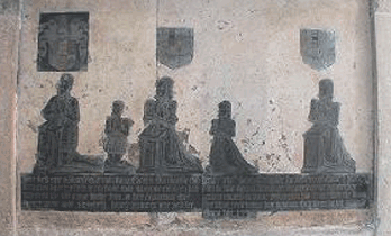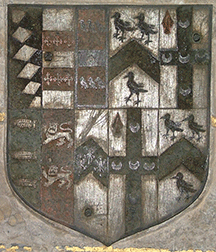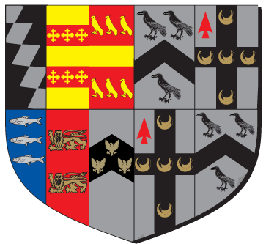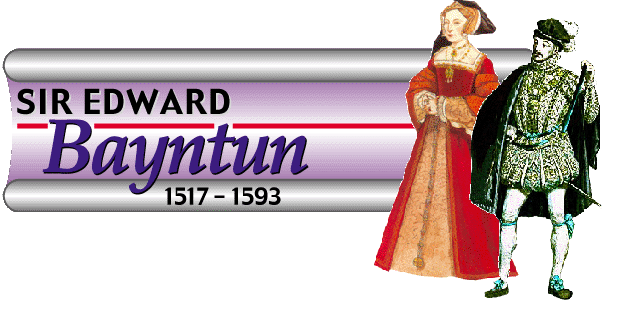
|
Timeline
1553: Lady Jane Grey married Lord Guildford Dudley on 21st May and King Edward named her as his heir. Edward was forced to sign a document prepared by the Duke of Northumberland, altering the succession to the throne of England. Edward VI was a frail child and eventually died of tuberculosis three months short of his 16th birthday on 6th July at Greenwich Palace, London. He was later buried in Westminster Abbey, Middlesex. His reign only lasted six years. Lady Jane Grey was declared Queen, even though she was only fifth-in-line of succession to the throne, aged just 17 years at the time. She was proclaimed Queen of England on 10th July, but only ruled for nine days until she was forced to relinquish her claim to the throne after her Catholic cousin, later Queen Mary I, claimed the throne a few days into Jane's reign. On 29th July, Jane was imprisoned in the Tower of London and Mary named as her successor. Mary Tudor’s coronation was at Westminster Abbey, Middlesex, on 1st October at the age of 37. Thomas Cranmer, the Archbishop of Canterbury, was committed to the Tower of London, charged with high treason for declaring Mary I illegitimate and supporting the attempt to place the Protestant Lady Jane Grey on the throne. 1554: Princess Elizabeth was imprisoned in the Tower of London in January for two months while she was questioned about her knowledge of plots against her half-sister Mary I. Lady Jane Grey and her husband, Lord Guildford were executed at the Tower of London on 12th February on Mary’s orders – a death sentence for a title she never wanted! She was buried in The Chapel Royal of St. Peter and Vincula in the Tower of London. Queen Mary married Philip II, a Catholic from Spain, causing a huge outcry in England. The wedding took place in the Chapel of St. John the Evangelist in the Tower of London. She was nicknamed “Bloody Mary” because she burned 300 Protestants at the stake. 1557: England at war with France. 1558: Five years after her Coronation, Queen Mary died at St. James Palace, London on 17th November and was buried at Westminster Abbey, Middlesex. Her half-sister, Elizabeth I succeeded her and entered London in triumph. Elizabeth was the daughter of Henry VIII and his second wife, Anne Boleyn. 1559: Elizabeth I was crowned Queen of England on 15th January at Westminster Abbey, Middlesex. By this time the country was tired of war; the churches were converted and the greater majority of its people had gotten used to the new services. 1560: England was at war with Scotland. At the Treaty of Edinburgh, Mary Queen of Scots recognises Elizabeth as the rightful Queen of England. 1561: The husband of Mary Queen of Scots died and she returned to Scotland but Elizabeth refuses Mary safe passage. 1562: Queen Elizabeth falls ill with smallpox. 1568: Mary Queen of Scots imprisoned (for 18 years) in England on 24th April. |
Edward Bayntun was born in 1517 at Bromham Hall, in the county of Wiltshire – the second son of Sir Edward Bayntun, who was Vice-Chamberlain to five of Henry VIII's queens. He is named in many medieval documents as Sir Edward Baynton, however the family changed the spelling of their surname to Bayntun sometime around the beginning of the 17th century. When his father died in 1544, Edward's older brother, Andrew, inherited the Manor of Bromham and continued to reside at Bromham House – however, at this time, it had been greatly enlarged by his father. As laid out in his father's will, Edward Bayntun inherited The Ivy – a very large house at the centre of the old Manor of Rowden in the parish of Chippenham and he continued to live there for 20 years. The Manor of Rowden was Crown property from Saxon times until the reign of Henry VIII, when it was purchased by his father shortly before he died. The Bayntun's had been renting the property previously for some years. He was a Justice of the Peace for Wiltshire 1559; High Sheriff of Wiltshire 1571-1572; Member of Parliament for Wiltshire 1563-1567, Devizes 1571 and Calne 1572-1583. He resided at Rowden until his brother, Andrew, died without a male heir in 1564. He then inherited, at the age of 46, the Manor of Bromham and subsequently moved into Bromham House. The Court Book for the Manor of Bromham, for the period 1545 to 1557 is in the Wiltshire Records Office.
He married Agnes Ryce some time after 1548 and they had 13 children, most of whom were girls. The first born male heir, William, was murdered by witchcraft in 1564. However in 1572. Henry was born to the couple and he went on to inherit his father's estate upon his death in 1593. The names of all of his children are not know or have never been recorded, however they may have been born before the first surviving Bromham parish register began in 1566. She was the daughter of Lady Catherine Howard – whose father Thomas, was the 2nd Duke of Norfolk – and Sir Griffith AP Rhys K.B., Of Carew Castle, Pembrokeshire in South Wales. Lady Catherine was an aunt of two of Henry VIII's wives – Anne Boleyn and Katherine Howard. Agnes had an interest in part of the Stourton family estate but her right to these estates was challenged in the courts by Charles Stourton, 8th Baron Stourton, and she had peaceful possession only after he was executed for meurder in 1557. Agnes Ryce claimed
that a legal marriage took place at Stourton Chapel on the 6th January
1545 between she and William Stourton, the 7th Baron Stourton of Stourton,
by whom she had a daughter, Mary. In the preceding years 1541 to 1545,
Stourton had made large purchases of lands in Dorset, Somerset and
Wiltshire at an estimated cost of £4,500. The Baron was
previously married to Elizabeth Dudley of Atherington, Sussex and
had nine children by her, but when he died on the 8th September 1548
he left nothing to his wife or his younger sons, and little to his
eldest, whom none the less he named his executor. The greater part
of his goods and household stuff he bequeathed to his mistress Agnes
Ryce. When Agnes died there were only five of their 13 children living and 15 years later when Sir Edward died there were just three alive – Henry, Anne and Elizabeth. The names of more than half of their children are unknown as the custom of recording baptisms only began in Bromham in 1566. Their first born son died in 1564 and although Henry (born 1572) inherited when his father died, it is possible that between these years there may have been other male children who did not survive, or quite possibly daughters. In 1561, Sir Edward Baynton conveyed the Manor of Godswell and the Manor of Heywood to Thomas Long. In 1563 he represented Wiltshire in the Parliament and sat twice more for boroughs and he was one of the county's most active Justice of the Peace, attending quarterly sessions regularly, up to the time of his death
Sharyngton and Pledall promptly lodged an Action in one of the Royal Courts (probably the Court of Common Pleas, but possibly the Queen’s Bench). The action was started in Easter Term 1564 (probably April to May) and first appeared in the following Michaelmas Term (October 1564), where the Attorneys of each party stated their case, and the Indenture of 1560 was fully described as part of the defence case. As was quite usual in the Royal Courts, the case was then adjourned a number of times, and judgement against Sharyngton and Pledall was finally given in June 1566. To make quite sure that there could be no doubt about the ownership and descent of the lands, Edward Bayntun paid for an Inspeximus — which is an Exemplification, or copy of Proof of Ownership, for himself of the whole legal process, and this was drawn up on the 3rd July 1566. An ‘Indenture’ at this period was a formal way of recording any transaction involving commitments by two or more parties. In order that both parties to the transaction should have an identical and identifiable record, the agreement was written out by the Clerks twice (or sometimes three times) on sheets of parchment; then a jagged line was cut between the two (or three) copies, and each party took one piece. This meant that if there was any dispute between them in the future, each party should be able to produce a written copy of their agreement whose edge would exactly fit the other party’s copy. This practice neatly discouraged forgery. Because the practice was often used for apprenticeship agreements, the term ‘Indentures’ later came to be used almost synonymously with ‘apprenticeship'. In 1564, William Bayntun – their only living son at the time – was murdered by witchcraft as an infant by Agnes Mills of Stanley, Co. Wiltshire in 1564. In the Chancery proceedings which followed, she said she did the same murder by the procurement and enticement of Dorothy, the wife of Henry Bayntun (Edward's brother out of his father's second marriage) who was hoping that if Sir Edward failed to produce another male heir, the subsequent fortune of his estates would go to her husband, presuming Edward would die before him. Afterwards Agnes Mills was hanged for the same murder at Fisherton, Co. Wiltshire. See The Murder of William Bayntun.
These "unscrupulous adventurers" had directed Andrew Bayntun's money and estates to themselves, contrary to his intended entailment of the assets to his brother. Pleydell released any titles inherited from the acquired estates, which included the manors of Clench and Stanley hamlets, to Edward Baynton on 19 July 1566 and the Privy Council therefore rejected allegations of forgery against him. Edward had long been suspicious of Pleydell and Sharington, and brought an unsuccessful forgery charge against them to a Prerogative Court as early as July 1560. He also ordered an attack on Pleydell's servants after his acquisition of the Bremhill and Bromham properties. Pleydell, and others were indicted in 1564 and he returned to Fleet Prison charged with illegal hunting in Selwood Forrest. Pleydell was given leave, under escort, to attend impending "great suits" against him (probably related to the Bayntun family's forgery litigation). He was again accused of similar offences years later, and the prosecution called Pleydell and his accomplices "persons of long time acquainted with such lewd devices and practices". Some months later, a Counterpart of Bargain and Sale, dated the 21st August 8 Elizabeth 1 (1566) by Henry Sharyngton of Lacock to Edward Bayntun of Rowden and Agnes his wife, of all his land, within the park called "Spye Park", which were parcel of the Manor of Lacock to them, and the heirs of Edward Bayntun. It was on this land that his grandson built Spye Park House after the destruction of Bromham House during the civil war in 1645. Another deed, dated the 31st March, 12 Elizabeth 1 (1570) shows the administration of the Manor of Bromham and the Manor of Clench in the name of Edward Bayntun of Rowden, in consideration of certain sums of money and other good causes and considerations, him especially moving, assigning the property previously leased to his father by the Abbot of Battle, namely Battle Abbey to Thomas Ivye of West Kingston. In 1571 Edward Bayntun sold his family's share of “Whitleigh” – the ancient property of the Mauduit, Molines and Hungerford families. Sir Edward became a vital member of the county administration and he was knighted in 1574. His first wife died on the 19th August 1574 and was buried in the Bayntun Chapel crypt in Bromham church. Some time later he remarried Anne Packington and he was awarded the honour of Knight Bachelor of Wiltshire in 1574. In 1575 he sold part of the Manor of Rowden, including "The Ivy House" to Edward Hungerford, but he retained the part that gave manoral rights of which the Bayntun family were still Lords of the Manor of Rowden well into the 19th century with a farm fee recorded in 1868. In the years that followed Edward Bayntun was embroiled in law suits over land and it is not known if he recovered all of the Bayntun property, although a counterpart release, dated the 3rd April 18 Elizabeth I (1576) shows Sir Henry Sharyngton, of Lacock (son of the above mentioned William), releasing all his rights in the Manors of Bremhill and Bromham Battle and land in Peusey, Wotton Rivers and Foxeham. In 1577 Faulston House and the Manor of Faulston was sold to Thomas Vaughan of Bredwardine, Co. Hereford and a year later his second wife Ann Packington died in 1578. In a letter, dated the 27th July 1588, Sir Henry Knevett, one of the Deputy Lieutenants for ordering the county musters of Wiltshire and Captain appointed to attend on the Lord Chamberlain, mentions Sir Edward Bayntun as one of the Justices and throws great light on the actual preparation to resist the Armada and the arming of the Wiltshire contingent. He was one of the county's most active Justice of the Peace, attending quarterly sessions very regularly in the 1570's, 1580's and even sending in material until a few months before his death. Before his death, Edward had gained possession by law, and by numerous deeds, secured his holdings in Stanley Abbey, Bremhill, his parcels in Chippenham and other property. He had continually increased his estates by purchase and had become a vital member of the county administration. Sir Edward died in 1593, aged 76 years. His large ancient marble tomb, which was erected after his second wife's death in 1578, is at the south east angle of the Beauchamp Chapel, in the Church of St. Nicholas, Bromham. It is very interesting and includes brass figures (pictured below) showing a knight kneeling and his two wives and two of his three children that were alive at the time of their father's death – Elizabeth and Henry. The tomb-crest with shields in lozenges and Gothic cresting is supported by two columns with brasses against the back wall.
Above and behind his tomb is the south east window, which incorporates medieval stained glass. There are many family armorials in this window such as Roche, de la Mare, Tocotes and also Griffith AP Ryce, representing the marriage of his daughter, Agnes, to Sir Edward. When Sir Edward Bayntun died he was succeeded by his eldest living son and heir Sir Henry Bayntun. |
